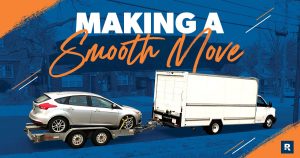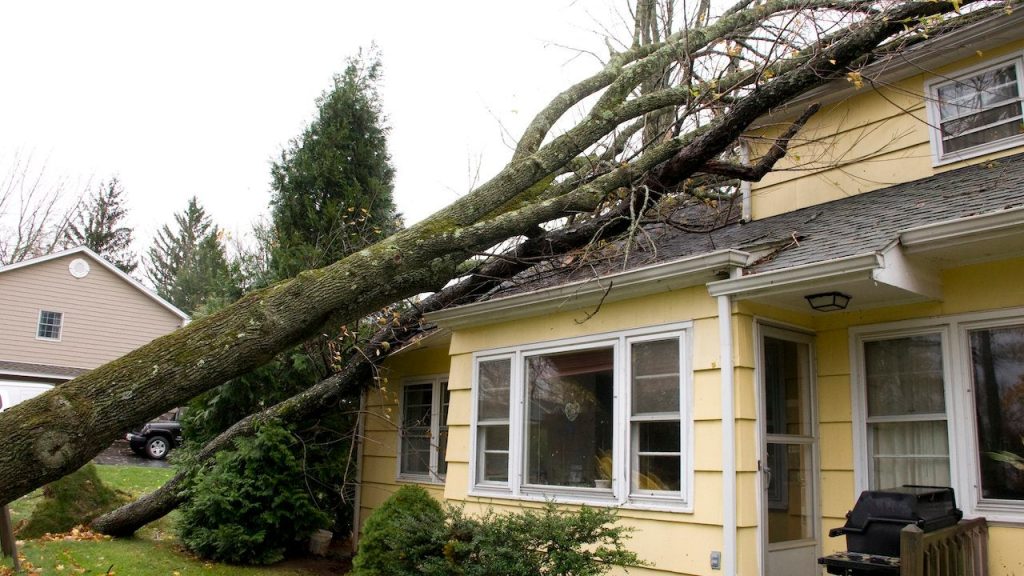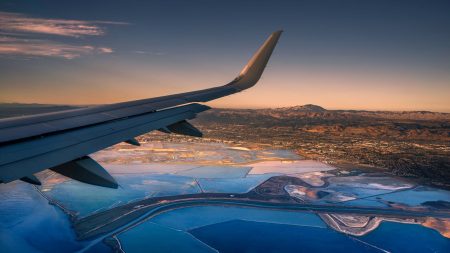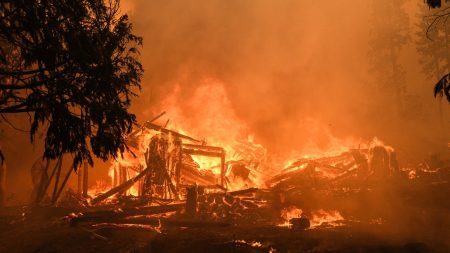In a sobering trend for homeowners, natural disasters are getting costlier, stronger and more frequent. Eight of the nine costliest wildfires on record have blazed since 2017, the Insurance Information Institute says. In Hurricane Alley, five of the six most devastating hurricanes to hit the U.S. have made landfall in the past decade. And three of the six nastiest tornado outbreaks on record have occurred since 2019.
Why is the toll from wildfires, storms and other catastrophes rising? Disaster experts point to a combination of changing weather patterns — warmer waters in the tropics mean more intense storms, while drier conditions in fire country feed wildfires — and to development patterns that bring more people than ever to live in disaster-prone areas.
In California and other parts of the West, soaring home values have pushed more people to seek out affordability by living in fire country. “Historically, these areas were prone to burn, but more people are living there,” says Robert Hartwig, director of the Center for Risk and Uncertainty Management at the University of South Carolina.
The trend is similar in hurricane-prone areas. Florida and other coastal states have seen continued population growth for decades. “That simply means more people in harm’s way,” Hartwig says.
Indeed, more than a quarter of Americans live in three states — California, Texas and Florida — that are nearly synonymous with natural-disaster risk. Here are some of the most catastrophic events that can strike a home, plus strategies for protecting your property.
Wildfire-proof homes
Unfortunately, devastating wildfires have grown common in recent years. The worst was Northern California’s Camp Fire in 2018. That inferno killed 85 people, destroyed 14,000 homes and caused insured losses estimated at more than $10 billion.
The map of fire-prone areas overlaps with many of the nation’s hottest housing markets: California, Arizona, Colorado, Idaho and Nevada all have experienced sharp increases in home prices in recent years. The housing affordability squeeze has boosted demand for properties in new suburbs and exurbs. Increasingly, those developments are in fire-prone canyons.
California officials have responded to the risk of fires by making building codes stricter. The new rules require such features as double-paned or multi-paned windows with tempered glass, metal screens over vents and fire-rated roofs. During the Camp Fire, 51 percent of houses built to the tougher standards remained standing. Only 18 percent of homes not built to the new fire code survived, according to the Insurance Information Institute.
Homeowners in fire country should be sure to have ample space between their homes and clear any vegetation in their yards, Hartwig says. That sort of maintenance makes it harder for a wildfire to reach the house. Meanwhile, insurers have begun to avoid wood-shingle homes, and new houses are being built with more metal and less wood.
For older homes not built with fire safety in mind, the Federal Alliance for Safe Homes offers this list of upgrades:
- Install a fire-resistive roof covering.
- Replace non-metal vent materials.
- Use wire mesh to cover attic vents, crawl space vents, vents in enclosures below decks and chimneys.
- Install non-combustible leaf guards over gutters.
- Upgrade to non-combustible siding.
- Install fire sprinklers.
- Move propane tanks and other fuel away from the home.
- Protect eaves, overhangs and soffits with fire-resistant materials.
- Install heat- and flame-resistant windows.
Tornado-proof homes
Tornadoes are especially terrifying for homeowners because they can materialize so suddenly, and destroy so thoroughly, packing winds in excess of 100 or even 200 miles per hour. The most powerful storms can have gusts as high as 318 mph, according to the Fujita Scale, which measures the intensity of tornadoes on a scale of EF0 to EF5.
In 2021, the National Oceanic and Atmospheric Administration recorded 1,376 tornadoes in the United States that claimed 103 lives, up from 1,082 storms and 76 deaths in 2020.
Tornadoes can happen just about anywhere, and almost without notice — wide swaths of the Midwest, Southeast and Mountain West have been hit by damaging twisters. Insured losses from tornadoes in the U.S. average about $17 billion each year, nearly equal to the losses incurred by hurricanes, the Insurance Information Institute reports.
“It’s practically impossible to build a home that can withstand an EF-4 or EF-5 tornado,” Hartwig says. “You’re talking about winds approaching 200 mph and a tremendous amount of flying debris. It’s more about protecting your life and your family at that point.”
The risk that any given house will be leveled is low enough that homeowners in Tornado Alley typically don’t harden their homes with impact-resistant windows and roof tie-downs. But one thing you can do to protect yourself is build a “safe room” in the house. These structures are bunkers built of concrete or steel and located away from windows and exterior walls. The Federal Alliance for Safe Homes estimates the cost at $3,000 to $9,500.
Hurricane-proof homes
Unlike tornadoes, hurricanes give homeowners plenty of advance warning. Property owners in coastal areas of Florida, Texas, Louisiana and the Carolinas know they’re at risk, and the storms themselves typically form days before hitting land.
Property insurers, building officials and homeowners were put on alert three decades ago when Hurricane Andrew struck near Miami. Andrew’s $16 billion in damage ($30.8 billion in 2021 dollars) made it the costliest storm ever to hit the U.S. Andrew ushered in a new era of costly storms — six major hurricanes since 1992 have eclipsed its toll, according to the Insurance Information Institute, most notably the devastation of Hurricane Katrina in 2005.
In the days and weeks after Andrew, photos of wrecked, shoddily built suburban homes spurred local and state officials to harden building codes. These days, new homes in Florida are built with a variety of hurricane-resistant features — the shells are concrete block rather than wood, windows are either impact-resistant or protected by storm shutters, garage doors are heavily reinforced, roof lines are designed to be aerodynamic.
“Over the past 30 years, Florida has made enormous strides,” Hartwig says. “More recent homes built to more stringent standards do indeed withstand hurricane winds better than older homes.”
Meanwhile, soaring premiums for windstorm insurance in Florida all but force owners of older homes to make upgrades. Homeowners can earn discounts on their windstorm policies by installing shutters or hurricane-rated windows, by adding roof tie-downs and by upgrading to garage doors and sliding-glass doors that meet the high standards of Florida’s building code.
Earthquake-proof homes
The U.S. has been spared a major earthquake since 1994, when the Northridge Earthquake caused $44 billion in property damage in Southern California. But severe earthquakes have continued to devastate other parts of the world, serving as a reminder that this risk remains very real.
The Federal Alliance for Safe Homes and the Insurance Information Institute suggest these improvements to homes near fault lines:
- Add anchor bolts or steel plates between your home and its foundation.
- Reinforce exterior unreinforced masonry walls.
- Reinforce cripple walls (the short wood-stud walls between the top of the foundation wall and the first floor).
- Upgrade foundation connections.
- Reinforce brick and masonry chimneys.
- Reinforce crawl spaces.
- Brace the water heater.
- Install an automatic gas shut-off valve.
- Secure bookcases, tall shelving and filing cabinets to walls with anchor bolts.
Flood-proof homes
Flooding is tricky: If your house is in a flood zone, there’s not much you can do to harden it. In many beach communities, homes are built on stilts to raise the living areas out of harm’s way in case of storm surges.
But there is something homeowners should do: buy flood insurance. Private insurers long ago stopped insuring against rising waters, outsourcing that responsibility to the federal government. The National Flood Insurance Program is the only provider of flood policies.
Yet many homeowners are unaware of this reality, realizing only after a flood that they aren’t insured. “The biggest mistake people make is not purchasing a flood policy,” Hartwig says.
If your property is in a high-risk flood zone and you have a mortgage, the lender will compel you to buy coverage. If you’re in a lower-risk area, flood insurance is optional, but definitely worth considering.
Lightning-proof homes
Thunderstorms might sound like small potatoes compared to the disasters listed above. But lightning strikes are no joke. Homeowners insurers paid out $1.3 billion for lightning damage in 2021, per the Insurance Information Institute.
The costliest damage comes from fires caused by lighting. However, homeowners can also suffer losses from power surges caused by lightning. New homes are equipped with a type of surge protection known as a ground fault circuit interruptor, or GFCI. If your house has an older electrical system, it’s worth hiring an electrician to add one.
“It can be installed relatively inexpensively,” Hartwig says. “You should have a surge protector to protect your electronics. That’s become even more important as more people are working from home, and have even more electronics.”
Bottom line
Natural disasters like wildfires, hurricanes, and earthquakes can be devastating for homeowners, and climate change is making them ever more destructive. But there are ways to protect yourself, and your real estate investment — including specific insurance policies and home upgrades that make a home better able to weather the storm.
Read the full article here










